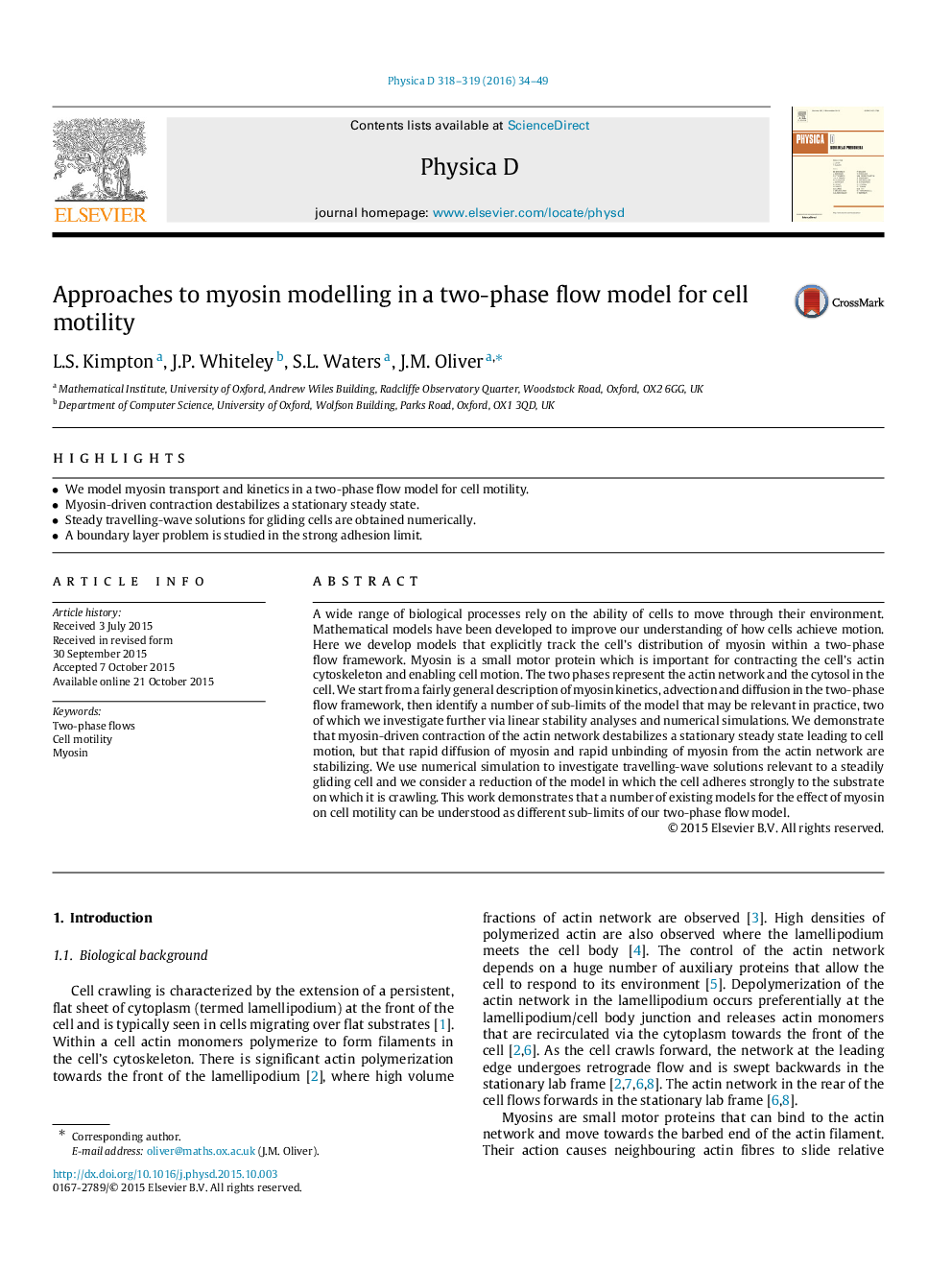| Article ID | Journal | Published Year | Pages | File Type |
|---|---|---|---|---|
| 1899198 | Physica D: Nonlinear Phenomena | 2016 | 16 Pages |
•We model myosin transport and kinetics in a two-phase flow model for cell motility.•Myosin-driven contraction destabilizes a stationary steady state.•Steady travelling-wave solutions for gliding cells are obtained numerically.•A boundary layer problem is studied in the strong adhesion limit.
A wide range of biological processes rely on the ability of cells to move through their environment. Mathematical models have been developed to improve our understanding of how cells achieve motion. Here we develop models that explicitly track the cell’s distribution of myosin within a two-phase flow framework. Myosin is a small motor protein which is important for contracting the cell’s actin cytoskeleton and enabling cell motion. The two phases represent the actin network and the cytosol in the cell. We start from a fairly general description of myosin kinetics, advection and diffusion in the two-phase flow framework, then identify a number of sub-limits of the model that may be relevant in practice, two of which we investigate further via linear stability analyses and numerical simulations. We demonstrate that myosin-driven contraction of the actin network destabilizes a stationary steady state leading to cell motion, but that rapid diffusion of myosin and rapid unbinding of myosin from the actin network are stabilizing. We use numerical simulation to investigate travelling-wave solutions relevant to a steadily gliding cell and we consider a reduction of the model in which the cell adheres strongly to the substrate on which it is crawling. This work demonstrates that a number of existing models for the effect of myosin on cell motility can be understood as different sub-limits of our two-phase flow model.
